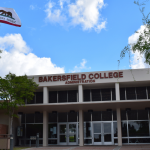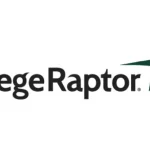To say that student expectations for higher education are evolving quickly is a vast understatement. Today’s students have a very specific vision for their college experience — and the institutions that fall short of that vision will, unfortunately, struggle to attract, enroll, and retain students. Today, we’ll take a look at the landscape, challenges colleges and universities face, and strategies for improving student retention in higher education. Let’s dive in!
Challenges to Improving Student Retention in Higher Education
The pressure on institutions to improve student retention will only increase in the years ahead. This pressure is fueled by four major emerging challenges, both within and outside of higher education:
- Competitive pressures from other traditional colleges and universities that are expanding their reach
- Competitive pressures from non-traditional colleges that are offering new education models
- Competitive pressures from businesses offering would-be students significantly higher wages than before the pandemic
- Students questioning the value proposition of the traditional college experience
1. Competing for Students Amid Pressures from Traditional Colleges
Think for a minute about how higher education’s public colleges and universities have traditionally had a geographic focus. So many institutions have a state or county in their name. And don’t forget about the directional adjectives — Northeast, Southwest, and so on. Those names reflect the institution’s home base. But, those names no longer limit an institution’s reach. Increasingly, students — no matter where they live — have access to programs provided by public institutions that are based hundreds or thousands of miles away.
An article in EconoFact does a nice job showing how geographic location has historically been a barrier for higher education, especially for those “on the cusp” who may make a decision based solely on how close they are to the nearest institution. As schools – especially those with a strong geographic pull like community colleges, regional public universities, and small liberal arts institutions – expand their online presence, they increase access but also contribute to increasing pressure on improving student retention in higher education.
2. Competing for Students Amid Pressures from Non-Traditional Colleges
The pandemic accelerated digital transformation (Dx) across the higher education landscape. It has also propelled non-traditional models that desired to disrupt the traditional educational landscape, but pre-pandemic had been more of a distant threat. Coming out of the pandemic, newer and more dynamic institutions, such as the University of Southern New Hampshire and Western Governors University, are offering compelling, credible and efficient educational paths that are picking up steam, and will be angling to lure students from traditional institutions.
Additionally, major companies (e.g. Google) and/or educational platforms (e.g. Coursera and 2U) are partnering with institutions across the higher education landscape to offer their own certifications/badges/other alternative credentials. These programs are often shorter than other traditional credentialing programs.
3. Attracting Students when Labor Shortages are Driving Up Wages
Prior economic disruptions, such as the Great Recession in 2008-09, led to an increase in student enrollment. The economic turbulence of the pandemic, and the associated phenomenon such as the Great Resignation, has had a different impact on higher education. In fact, financial difficulties and increased cost of living are cited as two of the top four reasons why students don’t re-enroll.
Adult learners, in particular, have not flocked to traditional college programs in the numbers that might have been expected. For community colleges, there is an acute pressure and competition from hourly job opportunities. Many students are postponing their educational investment by taking jobs that pay significantly higher wages than they did pre-pandemic.
Per a recent piece from NPR:
“The nation’s community colleges are continuing to feel the bulk of the decline, with a 13% enrollment drop over the course of the pandemic. But the fall 2021 numbers show that bachelor’s degree-seeking students at four-year colleges are making up about half of the shrinkage in undergraduate students, a big shift from the fall of 2020, when the vast majority of the declines were among associate degree seekers.”
Moreover, as employers offer their own certifications/credentials, that is another reason a would-be student might choose to enter the workforce without a degree from a more traditional college or university. If they need or want a credential to advance their career, it may be available directly through their employer (which also guarantees applicability/relevance to a wage-earning role). For more information, Ed Surge provides a strong article on the transformational employer-issued credentials.
But it should be noted that forgoing higher education for a slight wage increase in the present may have longer-reaching economic consequences, both for individuals and the US economy overall. A recent piece from The Hechinger Report highlighted the fact that high school graduates earn an average of nearly $25,000 less annually than their counterparts with bachelors’ degrees. Lower earnings for more workers means a smaller tax base, less consumer spending, and slower economic growth across the entire population.
4. Students Questioning the Value of the Traditional College Experience
As noted above, institutions are competing not only amongst themselves for students, but also with new programs, providers, and the general workforce. There is also another challenge: students – especially if they’re leaving or delaying their entry into the workforce to invest in their education – reasonably expect a return on investment. We should not be surprised that this expectation becomes more top-of-mind as higher education costs rise. Colleges and universities need a strategy to address the ROI piece. Unfortunately, only half of current college students (55%) agree the education they’re receiving is worth their tuition according to recent research.
Want to learn more about the student enrollment landscape? Check out our infographic, “Solving the Student Enrollment Crisis in Higher Education”!
Improving Student Retention in Higher Education: Top Strategies
In order for traditional colleges and universities to respond to these challenges, they need to deploy multiple strategies proven to be effective when it comes to improving student retention in higher education. Institutions of higher education must consider incorporating academic and instructional programs that are shorter and more dynamic. They also need to invest in partnerships that connect students more directly with jobs and other learning opportunities (like internships) throughout their programs. And, as noted above, they need to find better ways to communicate the value of an education investment to address concerns about ROI.
These programmatic and communication efforts will help traditional institutions to compete more effectively, but they won’t be sufficient.
This is because we are moving into a new normal in higher education: more students will be splitting their educational journey among a handful of different providers. Because of this, traditional colleges and universities need to be thinking of ways that technology, particularly emerging AI-powered technology, can become a part of their overarching strategy to recruit, engage, advise, and retain students.
These new technologies can engage and advise students, and also provide the sorts of data and insights that can enable the institution to adapt to a rapidly evolving educational landscape and student habits. Additionally, they are intended to work hand-in-glove with human staff to provide students with the sort of modern experience they have come to expect, all accessible via their mobile device.
Four Strategies for Improving Student Retention in Higher Education
University retention strategies that put students first and keep the college’s mission top-of-mind will ensure success. So many traditional policies and processes miss the mark by not thinking about how students will navigate them. Too often, they create unnecessary friction and a continual “bounce from office to office” to get the help they need. Some strategies that help to create a personalized and seamless student experience are below!
1. Reach Students on Their Preferred Channels: Chatbot, Texting, & Live Chat
You may know the expression TL;DR, which stands for “too-long, didn’t read.” Accept that emails are rarely going to be read thoroughly by the students your institution is most concerned about dropping out. Chatbot, live chat, and two-way texting are all their preferred methods of communication.
AI-powered two-way text messaging in particular is an effective way to reach students on their mobile device with reminders, polls, and nudges. Plus, it creates an open pathway for conversations between students and staff. When staff is not available to respond to an inbound text message, an AI-powered digital chatbot (that can tap the same knowledge base of content that underpins a web-based chatbot on your website) is there to help.
We are observing that nearly 40% of interactions via text messaging and AI chats across the Ocelot community of more than 500 colleges and universities are happening outside of “normal business hours.” This communication channel can be a life saver for students with professional and/or caretaker obligations who need to have conversations about finances, advising, and career preparation with their school outside of standard office hours. Communicating with students via two-way AI-powered text messaging is a highly flexible and inclusive form of engagement.
2. Connect Communication Technology with Vital Back Office Systems for Personalized Experiences
Doubtless, your college or university uses plenty of back-office systems that hold student data — data that top of the line AI-powered student communications technologies can connect to with great effect. When you connect the student communications technology with student information systems (SISs) or customer relationship management systems (CRMs), for example, you are able to add student-specific information to text messages and chatbot/live chat conversations.
The impact of personalizing communications cannot be understated — engagement and response rates increase, students are able to take action on the communications, and you are able to speak to each student’s individual journey. It’s a recipe for improving student retention!
3. Create a Community and Sense of Inclusion and Belonging
Administrators often share that they were drawn to work in higher education for its core mission: to help students. The wonder and promise of AI-technology is that it can fuel and scale the ambitions of each and every staff member to create a positive and welcoming environment that makes every student feel valued.
For instance, when AI is paired with the sort of custom non-English language algorithm that Ocelot has built specifically for higher education, schools can communicate with parents and relatives of students whose native language may not be English. This is a far better experience than using an off-the-shelf translation service from a major tech company. When the school puts the student experience first, it makes a welcoming environment a key focus and engagement stronger. With this approach, colleges and universities give themselves a greater chance to keep and retain at-risk students.
4. Communicate the ROI and Value of the Educational Investment
This is not an easy one, but it’s important. A higher education is an investment in oneself. There is no guarantee that this investment will pay off. However, institutions can help students make the most of their investment by providing them with timely advice and guidance about pursuing a path that is efficient, and leads to a productive opportunity post-completion.
As higher education costs rise, institutions that are able to: 1) provide students with clear information on how to pay for it, 2) provide practical ideas on how to minimize costs and limit borrowing, 3) suggest prudent educational paths to follow, and 4) connect students with alumni who have successfully navigated the school-to-job transition, will do better at retaining students who may have doubts about persisting.
Colleges and universities want to provide this sort of advice at scale, but many are not able to invest in traditional methods that rely heavily on staff. AI-powered tools can scale the staff to help extend its impact and stay in good communication with all students, especially those who may be at risk of stopping before completing their educational path.
Want to explore even more strategies focused on improving student retention in higher education? Check out our eBook, “6 Strategies To Help You Tackle The Student Retention Crisis,” here!
The Wrap
Colleges and universities face existential threats. One is enrollment. Enrollment pressures will only become more intense as competition for students continues to increase.
To support enrollment, institutions need strategies that are proficient at limiting drop outs and improving student retention in higher education specifically. Successful institutions will rise to the challenge by tackling both the programmatic changes they need to make to meet the needs of students, as well as investing in AI technology to drive engagement. The latter is critical in creating a sense of belonging for students and anticipating the challenges at-risk students face. By anticipating when students might be having trouble, the institution can get ahead of it, and give itself the best chance of retaining the students.















